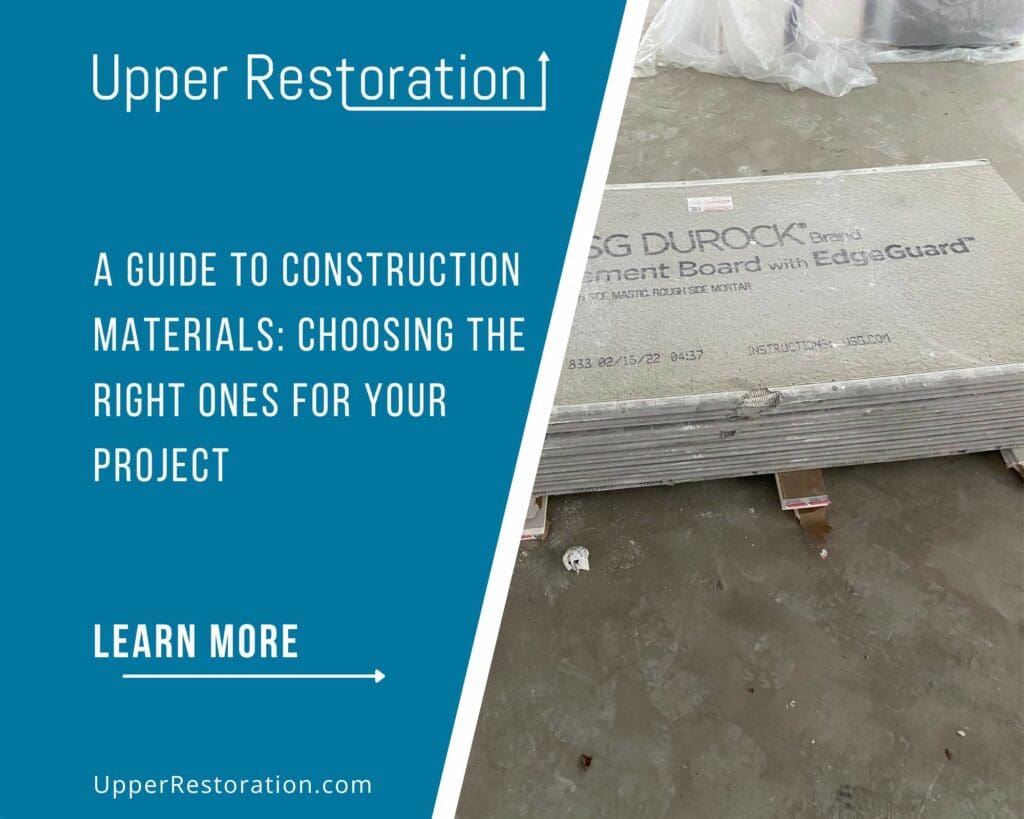Construction projects require careful planning and consideration of various factors to ensure their success. One of the most important aspects of any construction project is the selection of the right materials. Choosing the right materials is not only crucial for the durability and safety of the project, but it can also impact the overall cost and environmental impact of the project.
In this guide, we will provide a comprehensive overview of the key factors to consider when selecting construction materials, as well as an in-depth analysis of the most commonly used construction materials and their properties.
Purpose of the Project
The first factor to consider when selecting construction materials is the purpose of the project. The intended use of the project will dictate the necessary strength, durability, and other properties required of the materials. For example, a residential building will require different materials than a commercial building or a bridge.
Residential buildings typically use materials such as wood, brick, and concrete, while commercial buildings may require materials such as steel and glass. Bridges and roadways require materials that can withstand heavy loads and harsh weather conditions, such as concrete and steel.
Climate and Environment
Climate and environment are critical factors in material selection. Materials that perform well in one climate may not do so well in another. For example, materials that are ideal for dry, arid climates may not hold up as well in humid, coastal environments. Similarly, materials that perform well in cold climates may not be suitable for use in hot, sunny climates.
When selecting materials, it is important to consider the environmental conditions of the site. For example, if the project is located in an area with high humidity, materials that are resistant to moisture such as concrete and steel may be a better option than wood.
Cost
Cost is a significant consideration when selecting construction materials. While it may be tempting to opt for the cheapest materials available, it is important to consider the long-term costs of maintenance, repairs, and replacement. Investing in high-quality materials upfront can save you money in the long run.
When considering the cost of materials, it is important to factor in not only the initial cost of the materials but also the cost of installation, maintenance, and repairs over the lifetime of the project. For example, while wood may be a cheaper option than steel upfront, it may require more maintenance and replacement over time, which can increase the overall cost of the project.
Availability
Availability is another important factor to consider when selecting construction materials. Some materials may not be readily available in certain areas, which can lead to delays and increased costs. It is important to research the availability of materials in your area before making any decisions.
If a particular material is not readily available in your area, it may be necessary to consider alternative materials or to import the required materials. This can increase the cost and complexity of the project, so it is important to weigh the pros and cons of using alternative materials or importing materials.
Sustainability
Sustainability is becoming an increasingly important consideration in construction projects. Choosing materials that are environmentally friendly, renewable, and recyclable can help reduce the project’s environmental impact. Sustainable materials can also help to improve the energy efficiency of the building, which can result in cost savings over the lifetime of the project.
When selecting materials, it is important to consider their environmental impact over their entire lifecycle. This includes the extraction and production of the materials, the transportation of the materials to the construction site, the use of the materials during construction, and the disposal or recycling of the materials at the end of their useful life.
Material Options
Concrete
Concrete is a versatile and durable material that is commonly used in construction projects. It is strong, fire-resistant, and can be molded into a variety of shapes. Concrete is also relatively inexpensive compared to other materials, which makes it a popular choice for construction projects. Despite these benefits, concrete is a heavy material that can crack over time. It has a high carbon footprint due to the energy required to produce it, which makes it less sustainable than some other materials.
Steel
Steel is another popular construction material due to its strength and durability. It is resistant to fire and pests, and it can be recycled. Steel is also a relatively lightweight material, which makes it a good choice for large structures such as bridges and high-rise buildings. However, steel is also an expensive material and can be prone to corrosion in certain environments. It also has a high carbon footprint due to the energy required to produce it.
Wood
Wood is a renewable and sustainable option that is commonly used in residential construction. It is also affordable and easy to work with. Wood has a low carbon footprint compared to other materials, which makes it a more environmentally friendly option. It’s important to keep in mind that wood is prone to rot, pests, and fire, which can reduce its lifespan and increase maintenance costs. It is also not as strong as other materials such as steel and concrete, which makes it less suitable for large structures.
Brick
Brick is a classic and durable material that is commonly used in masonry construction. It is fire-resistant and has excellent insulation properties, which makes it a good choice for buildings in areas with extreme weather conditions. Unfortunately, brick is a heavy material that can be expensive to transport and install. It is also not as strong as materials such as concrete and steel, which makes it less suitable for large structures.
Asphalt
Asphalt is commonly used in road construction due to its durability and flexibility. It is also relatively affordable compared to other materials. Asphalt is a lightweight material, which makes it a good choice for roads and other structures that require a smooth surface. However, asphalt is not as strong as concrete and can crack over time. It also has a high carbon footprint due to the energy required to produce it.
Conclusion
Choosing the right construction materials is a crucial step in any construction project. By considering factors such as purpose, climate, cost, availability, and sustainability, you can make informed decisions that will ensure the success and longevity of your project. When selecting materials, it is important to weigh the pros and cons of each material and to consider their environmental impact throughout their entire lifecycle. By selecting materials that are appropriate for the project and that have a low environmental impact, you can help to reduce the overall cost of the project and improve its sustainability.




